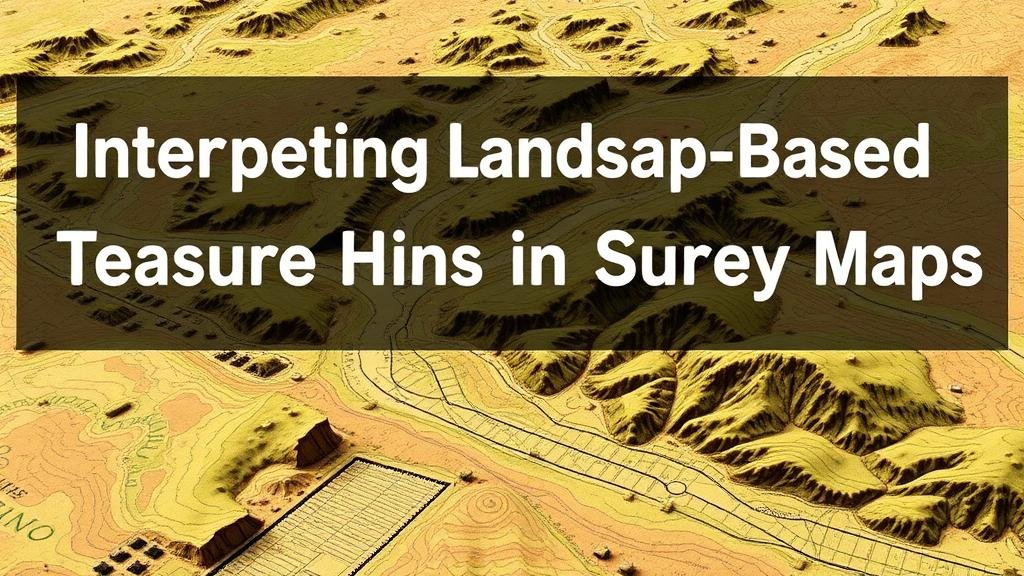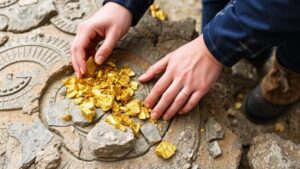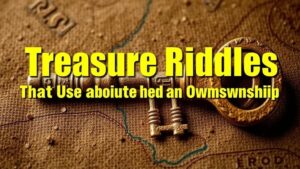Interpreting Landscape-Based Treasure Hints in Survey Maps
Interpreting Landscape-Based Treasure Hints in Survey Maps
The art of treasure hunting has captivated humanity for centuries, combining the thrill of discovery with the challenge of deciphering clues from various landscapes. Among the most critical tools in this pursuit are survey maps, which provide vital information about hidden treasures through landscape-based hints. This article delves into effective methods for interpreting these hints and offers practical insights for modern treasure hunters.
The Importance of Survey Maps in Treasure Hunting
Survey maps serve as essential resources in the field of treasure hunting. depict a comprehensive overview of geographical and topographical features that can indicate potential treasure sites. High-precision mapping technologies, including Geographic Information Systems (GIS), have further enhanced the accuracy of these maps by layering multiple data sources.
For example, in a case study involving the search for buried artifacts from the gold rush era in California, researchers utilized historical survey maps to identify locations of former mining camps. These maps indicated key landscape features such as river bends and specific topographical elevations that targeted dig sites effectively, demonstrating the importance of accurate map interpretations.
Key Landscape Features to Consider
When interpreting survey maps, several landscape features can yield contextual clues for treasure hunting. e include:
- Elevation Changes: Areas of significant height variation can signal the presence of human-made structures or altered landscapes.
- Water Bodies: Rivers, lakes, and streams are typically landmarks for historical trade routes and settlements, often indicating where treasures have been hidden.
- Vegetation Patterns: Changes in flora, such as denser forests or unusual tree formations, can hint at underlying historical significance or disturbances in the land.
- Pathways and Roads: Old trails or roads frequently represent routes of commerce and migration, suggesting potential treasure locations.
Deciphering Symbols and Markers
Survey maps often contain various symbols and markers that require careful interpretation. These symbols can denote historical landmarks, property boundaries, and even annotations made by previous explorers. Understanding the significance behind these symbols can help treasure hunters identify hotspots.
For example, certain maps may feature “X†marks or other distinct symbols that traditionally indicate treasure locations. Deciphering these markers involves correlating their positions with topographical features. In one documented instance, treasure hunters deciphered a series of red marks on a survey map that corresponded to a particular valleys shape and elevation, leading to the successful retrieval of lost artifacts.
Analyzing Historical Context
The historical context surrounding a map can dramatically influence how its features should be interpreted. Understanding the period in which the map was created, the socio-economic factors at play, and historical events can provide critical insights. For example, maps from the 18th century might delineate land use patterns that differ greatly from their modern counterparts.
A case in point involves the analysis of early colonial maps in North America, which showed the locations of settlements in relation to native tribes. By applying historical context to these maps, treasure hunters can better inform their search, honing in on regions that may have been overlooked but could likely hold artifacts.
Real-World Applications of Landscape Interpretation
Many modern treasure hunters use technological tools to augment their interpretation of landscape hints from survey maps. Drone technology and ground-penetrating radar (GPR) are becoming increasingly popular for this purpose. e tools allow for a three-dimensional analysis of the terrain, helping to identify potential dig sites based on previous map interpretations.
For example, a treasure-hunting expedition in the Bahamas utilized drone imagery alongside survey maps to identify a submerged shipwreck site. The data gathered from drones revealed a previously unnoticed underwater trench that corresponded with the angles indicated on the map, ultimately leading to the discovery of a trove of artifacts.
Actionable Takeaways for Treasure Hunters
For those interested in interpreting landscape-based treasure hints in survey maps, consider the following actionable steps:
- Familiarize yourself with the symbols and legends used on different survey maps.
- Analyze both modern and historical maps to gain a comprehensive understanding of the site.
- Use advanced technology, such as GIS, drones, and GPR, to augment your treasure-hunting efforts.
- Research historical accounts related to the area of interest to provide context for your findings.
By understanding the nuances of interpreting survey maps, treasure hunters can increase their chances of making significant discoveries, while also appreciating the intricate interplay between landscape, history, and treasure hunting.



